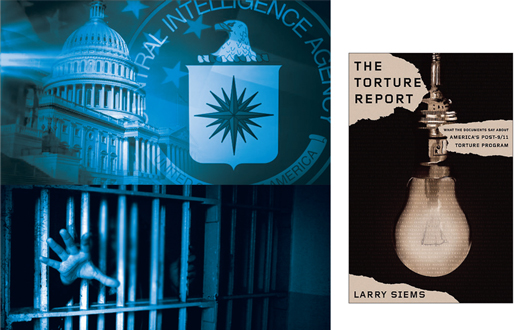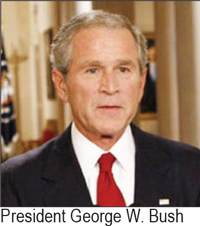Hiding the truth about CIA secret prisons
By Final Call News | Last updated: Jun 7, 2017 - 8:07:08 AMWhat's your opinion on this article?

|
While all things Russian, Putin and Trump dominate much of U.S. news coverage, another important aspect of U.S. history and policy is going largely unnoticed and may never see the light of day.
In news reports June 2, the New York Times and CNN were among outlets that revealed plans by the Trump administration to lock away the results of an investigation of infamous secret prisons deployed under the administration of George W. Bush.

|
“The Trump administration has begun returning copies of a voluminous 2014 Senate report about the Central Intelligence Agency’s detention and interrogation program to Congress, complying with the demand of a top Republican senator who has criticized the report for being shoddy and excessively critical of the C.I.A.
“The Trump administration’s move, described by multiple congressional officials, raises the possibility that copies of the 6,700-page report could be locked in Senate vaults for good—exempt from laws requiring that government records eventually become public. The C.I.A., the office of the Director of National Intelligence and the C.I.A.’s inspector general have returned their copies of the report, the officials said,” in the New York Times article.
The report followed a probe into the CIA program unleashed after the Sept. 11, 2001 attacks that included alleged terrorists rounded up and shipped off to secret prisons—no trials, no due process and little oversight.
“The central conclusion of the report is that the spy agency’s interrogation methods—including waterboarding, sleep deprivation and other kinds of torture—were far more brutal and less effective than the C.I.A. described to policy makers, Congress and the public,” the Times said.
The report would not be subject to the Freedom of Information Act—meaning everyday Americans, the media and other groups could petition to have access to the report—because FOIA doesn’t apply to congressional records.
This report offers information on one of the darkest operations known yet that came out of the nefarious War On Terror.
Let us refresh your memory: “On September 17, 2001, six days after the terrorist attacks in New York and Washington, DC, President Bush signed a directive authorizing the CIA to set up and run secret prisons outside the United States. Secret prisons are illegal. Every nation on earth must acknowledge its prisons, account for its prisoners, and allow those it is holding to communicate that they’ve been imprisoned. All prisoners must have some access to legal process. The International Committee of the Red Cross must be permitted to visit them and monitor the conditions of their imprisonment.
“Seizing someone and delivering him to a secret facility where he is held incommunicado and unacknowledged is ‘enforced disappearance,’ a gross human rights violation associated with infamous, brutal regimes. The laws against it are as absolute as those banning torture and cruel, inhuman, and degrading treatment, and the two crimes are closely linked. Invisible prisoners are abused prisoners, as a rule. But it is more than that: the uncertainty and fear disappearance engenders, not just in those who are disappeared but also in their families and communities, is itself considered a form of cruelty,” wrote Larry Siems for The Torture Report, which tracked this ugly and illegal aspect of American policy. Through its website, www.thetorturereport.org, The Torture Project archived and discussed different bits of information about the operation made public over the years.
It noted that tens of thousands of pages “testify to the torture and cruel, inhuman, and degrading treatment of detainees that began in the CIA’s ‘black sites’ and spread through acknowledged and unacknowledged prisons in Guantánamo Bay, Afghanistan, and Iraq. Much of the most direct evidence remains secret, however. Videotapes of interrogations have been destroyed,” Mr. Siems noted.
Even the Sept. 17, 2001 directive that authorized the Black operations was secret, so secret that the CIA said the font the directive was written in was classified, he said. It was actually President Bush who revealed the CIA’s Rendition, Detention, and Interrogation Program. “In a speech on September 6, 2006, he revealed that the agency had been holding ‘a small number of suspected terrorist leaders and operatives’ in secret sites overseas, and had been interrogating them with ‘an alternative set of procedures.’ After being held for as long as four and a half years, the President announced, the last 14 of these CIA detainees had been transferred into military custody in Guantánamo,” wrote Mr. Siems.
“The Trump administration is having at least two federal agencies give their copies of the Senate’s CIA torture report back to the Senate, according to a report by The New York Times,” said the American Civil Liberties Union in a statement. The ACLU led an unsuccessful court battle to have the records made public, which means the Trump administration can now lock away the report.

|
“In December 2014, at the request of the Senate Select Committee on Intelligence, the Obama administration released the 524-page executive summary, but the full 6,000-plus page report remains classified,” said the civil liberties group.
“President Obama deposited a copy of the full report with the National Archives, but it can’t be made public for at least 12 years—and may never be,” the ACLU observed.
Hiding the truth is not a good thing for a nation that insists the public’s right to know and government accountability are hallmarks of a healthy democracy. Lessons are rarely learned when government misconduct is put under public scrutiny. They are never learned when the evil done is buried, forgotten and locked away.
INSIDE STORIES AND REVIEWS
-
-
About Harriett ... and the Negro Hollywood Road Show
By Rabiah Muhammad, Guest Columnist » Full Story -
Skepticism greets Jay-Z, NFL talk of inspiring change
By Bryan 18X Crawford and Richard B. Muhammad The Final Call Newspaper @TheFinalCall » Full Story -
The painful problem of Black girls and suicide
By Charlene Muhammad -National Correspondent- » Full Story -
Exploitation of Innocence - Report: Perceptions, policies hurting Black girls
By Charlene Muhammad -National Correspondent- » Full Story -
Big Ballin: Big ideas fuel a father’s Big Baller Brand and brash business sense
By Bryan Crawford -Contributing Writer- » Full Story






 Click Here Stay Connected!
Click Here Stay Connected!








